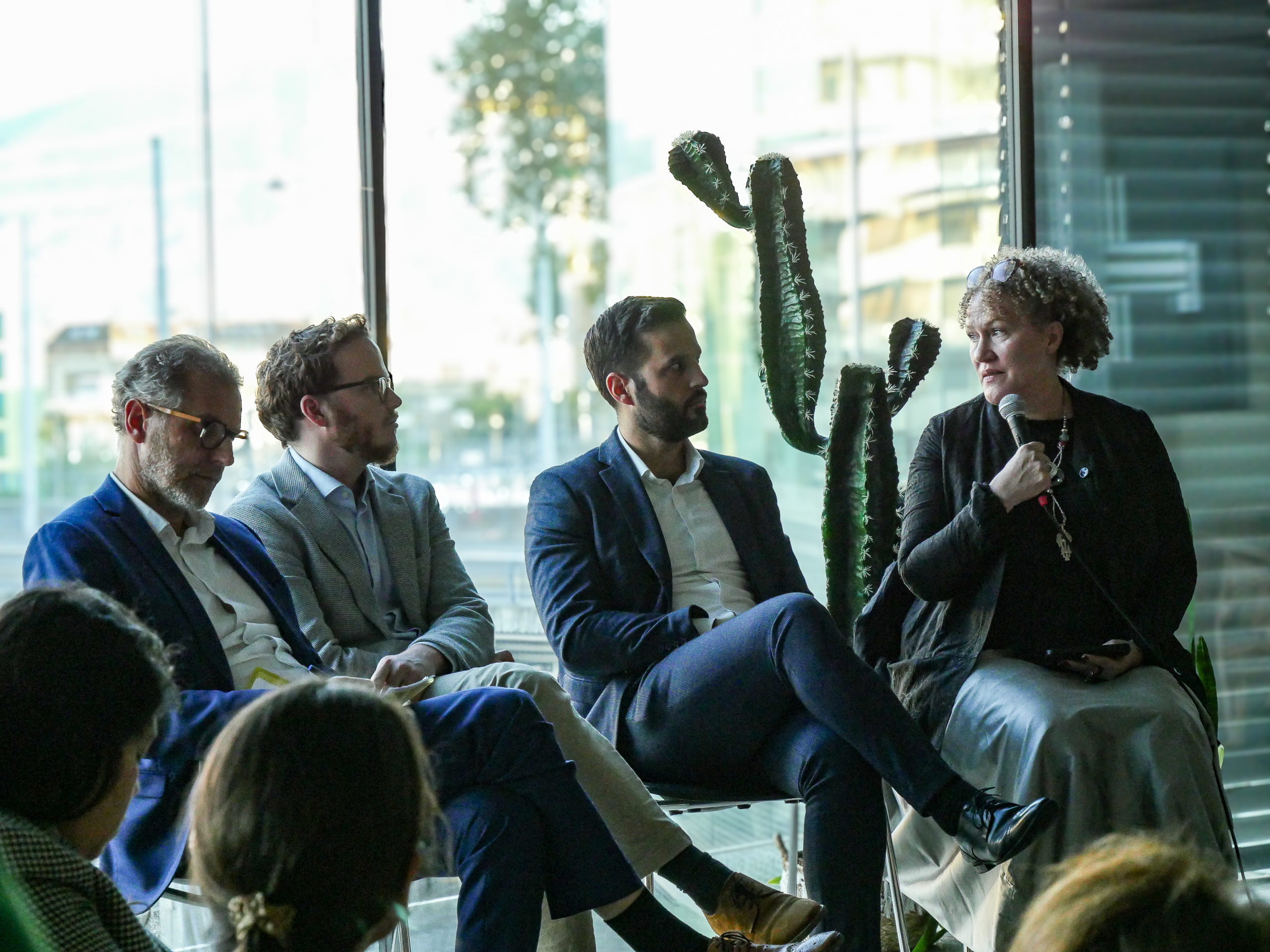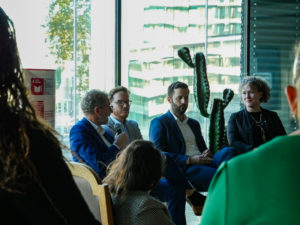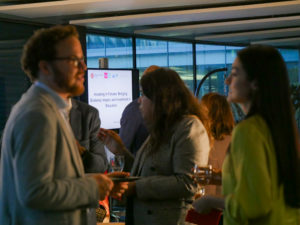Investing in Futures: Highlights from the Education Finance Evening
1 October 2025, Geneva – Co-hosted by EFN, NORRAG & iGravity on the margins of Building Bridges
On the margins of Building Bridges, the leading conference on sustainable finance, NORRAG welcomed partners and stakeholders interested in education financing and investment to Maison de la Paix in Geneva for a dynamic side event co-organised with the Education Finance Network (EFN) and iGravity.
The gathering brought together a diverse group of actors – from public agencies and philanthropic investors to entrepreneurs and researchers – who share a common interest in the future of education financing and in the role that private sector investments can play in closing the global education funding gap. This critical topic, still too often overlooked in policy and practice dialogues in education and impact finance altogether, took centre stage throughout the evening.
Participants heard spotlight presentations from a diverse panel representing voices from the public funding, investing, entrepreneurial and research lenses, contributed their suggestions to make a stronger case for education the investment community, and exchanged ideas during an informal networking session designed to foster collaboration across sectors.
Can development, finance and research help bridge the financing gap for education?
Saskia Sickinger, representing the Education Finance Network, set the stage by reminding the urgency of the global education financing crisis, and that bridging the worlds of development, finance, and research could make a significant difference. Her opening remarks encouraged speakers and participants to go beyond abstract ideas — to grapple with trade-offs, risks, and what it will truly take to mobilise resources effectively and spend them with impact.
Results-Based Financing: fostering accountability and impact
Steven Geiger from the Swiss Agency for Development and Cooperation (SDC) painted an honest picture of the scale of the funding shortfall facing the education sector and reiterated Switzerland’s commitment to promoting results-based financing as one way to unlock additional capital. While acknowledging that no single financial tool is a panacea, he argued that mechanisms which incentivise and reward measurable outcomes can strengthen accountability and attract investors. Drawing on SDC’s experience, Geiger explained how linking disbursements to agreed outcomes has fostered a stronger performance-orientation among partners, shifting mindsets towards more rigorous monitoring, evaluation, and course correction.
Innovative financing as a tool to empowering education entrepreneurs
Lucas Tschan of iGravity brought the entrepreneurial perspective, stressing that small businesses and social enterprises are essential to transforming promising ideas into scalable education solutions. Yet, these actors often struggle to secure the financing they need — not because of a lack of innovation or impact, but because traditional investors perceive them as too risky, too small, or insufficiently proven. He explained how from his experience at iGravtity, innovative financing instruments blending grants, debt, and outcome payments, can help de-risk investments and create pathways for these ventures to grow, explaining how essential such financing approaches are if proven education interventions are to expand sustainably and contribute meaningfully to development goals.
Innovative finance and private sector investments: A Complement to domestic funding, not a Substitute
From the perspective of the UBS Optimus Foundation Social Finance (UBS OF) – a pioneer in philanthropic investing in education – Michael Rieser offered an important note of caution. Acknowledging that while innovative finance has generated significant interest recently years in the face of declining public funding, it should not be seen as a “silver bullet.” Education, as a fundamental public good, requires a holistic approach, and grant funding coupled robust domestic public spending will always remain central pillars of education financing. Innovative finance, he argued, should be viewed as complementary – a tool to extend, diversify, and mobilise additional resources, not a substitute, in a context where market mechanisms alone cannot adequately reach the most vulnerable or underserved learners.
Collaborative research to learn from what works and what doesn’t
For Moira Faul, Executive Director of NORRAG, evidence is an essential foundation upon which the future of informed innovative financing must rest. Without rigorous research, the promises of new financing models risk remaining unfulfilled. She highlighted two fundamental questions that research must address: Do these initiatives work — and if so, is it the financing mechanism itself that drives their effectiveness? Does innovative financing truly attract new resources, or does it simply reallocate existing ones? Her remarks called for collaborative, participatory research to understand why initiatives succeed, how they can be improved, and how they can be scaled responsibly. Mechanisms must be designed to learn, adapt, and evolve over time. She also reminded participants that innovation is not limited to private capital. Creative approaches within the public sector – such as debt swaps or education-focused tax reforms – also hold significant potential to generate additional funding for education.
A shared message forward
By bringing together voices from public donors, entrepreneurial finance, academic research, and practitioner domains, the event underscored a foundational truth: mobilising more capital for education will require more than new tools. It demands a robust bedrock of evidence, careful design, political will, and a commitment to equity. Innovative finance can accelerate and sharpen how resources are used, but it must be grounded in real sector realities and complemented by traditional public funding. And above all, as the speakers repeatedly stressed, evidence must guide every step.







